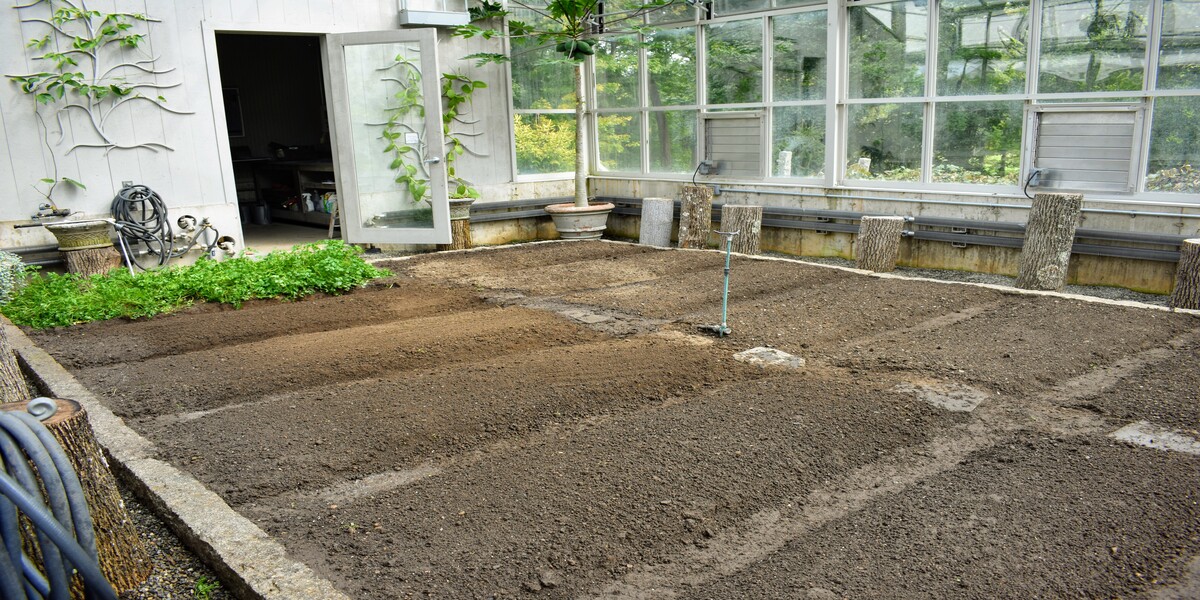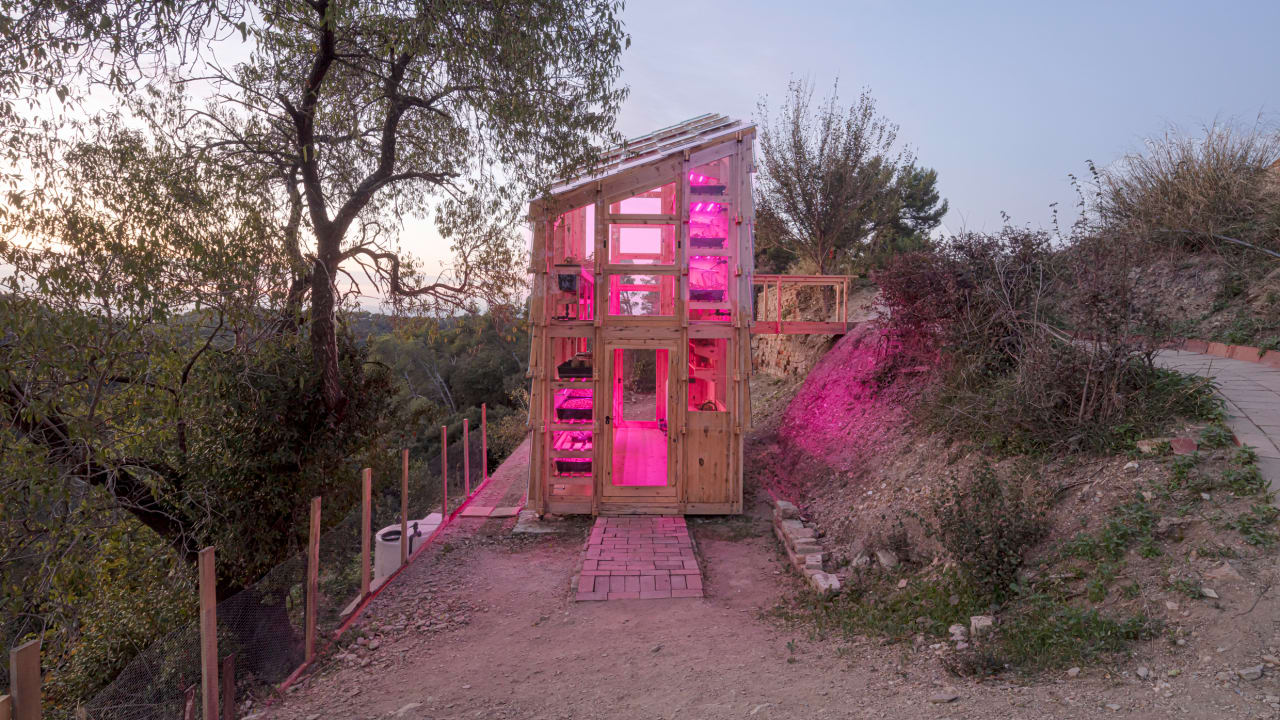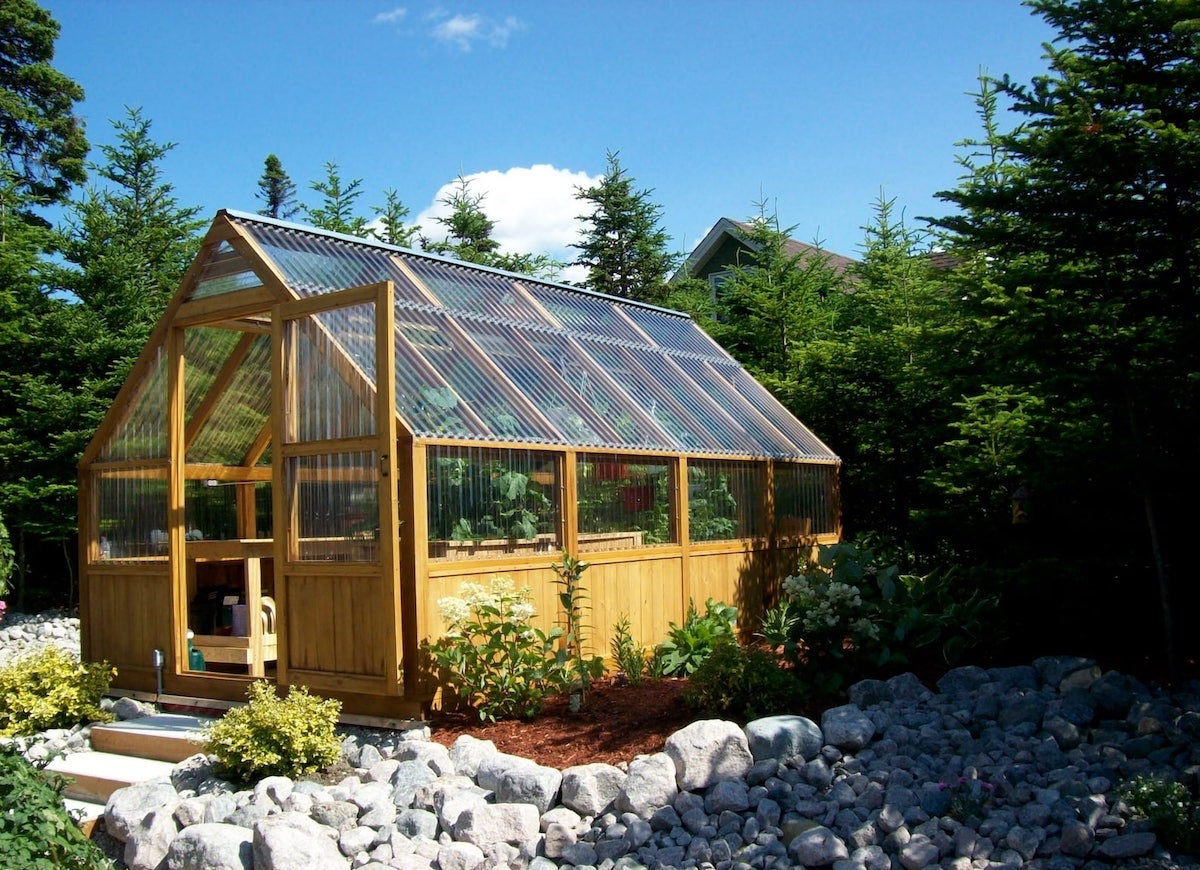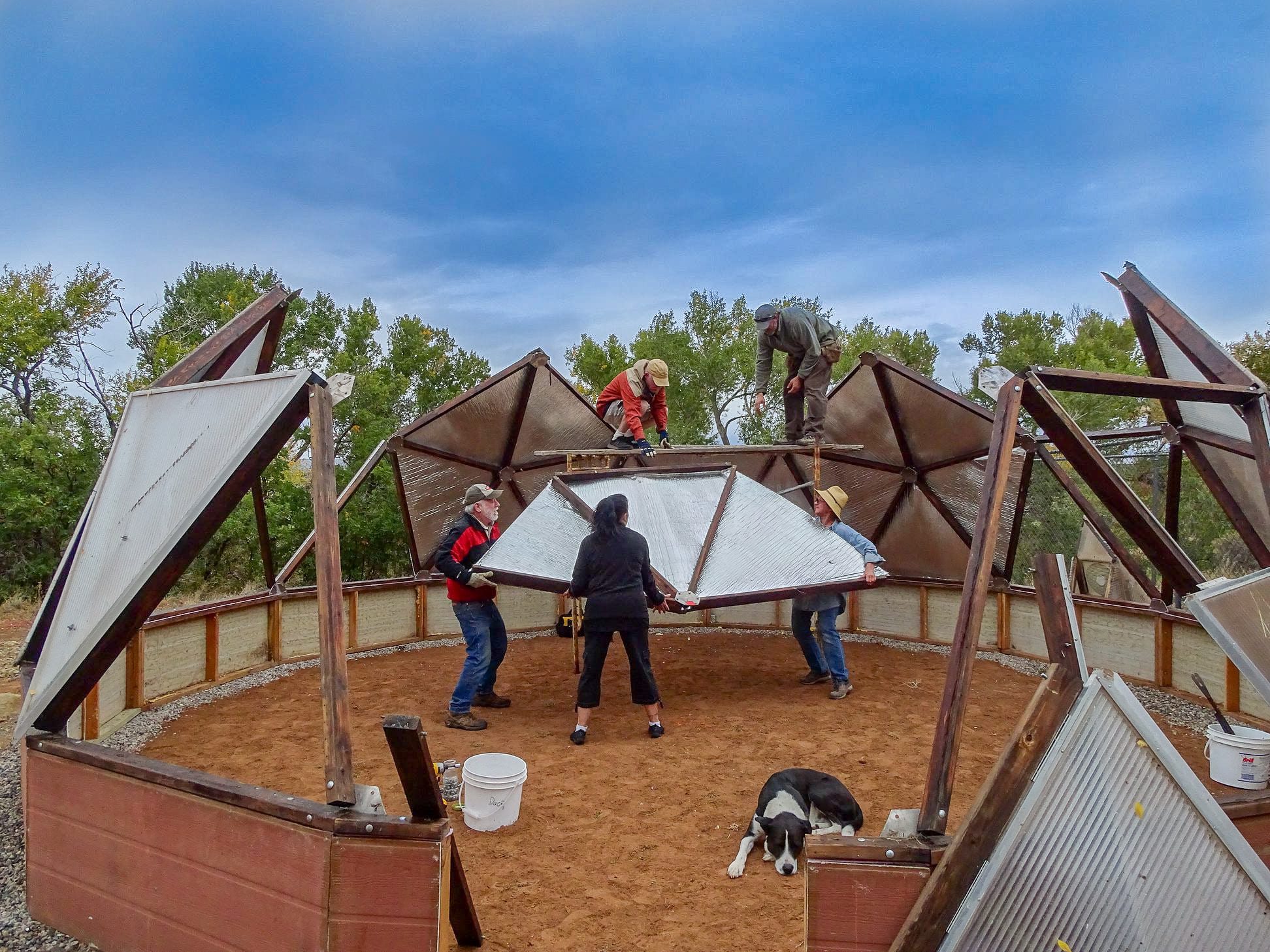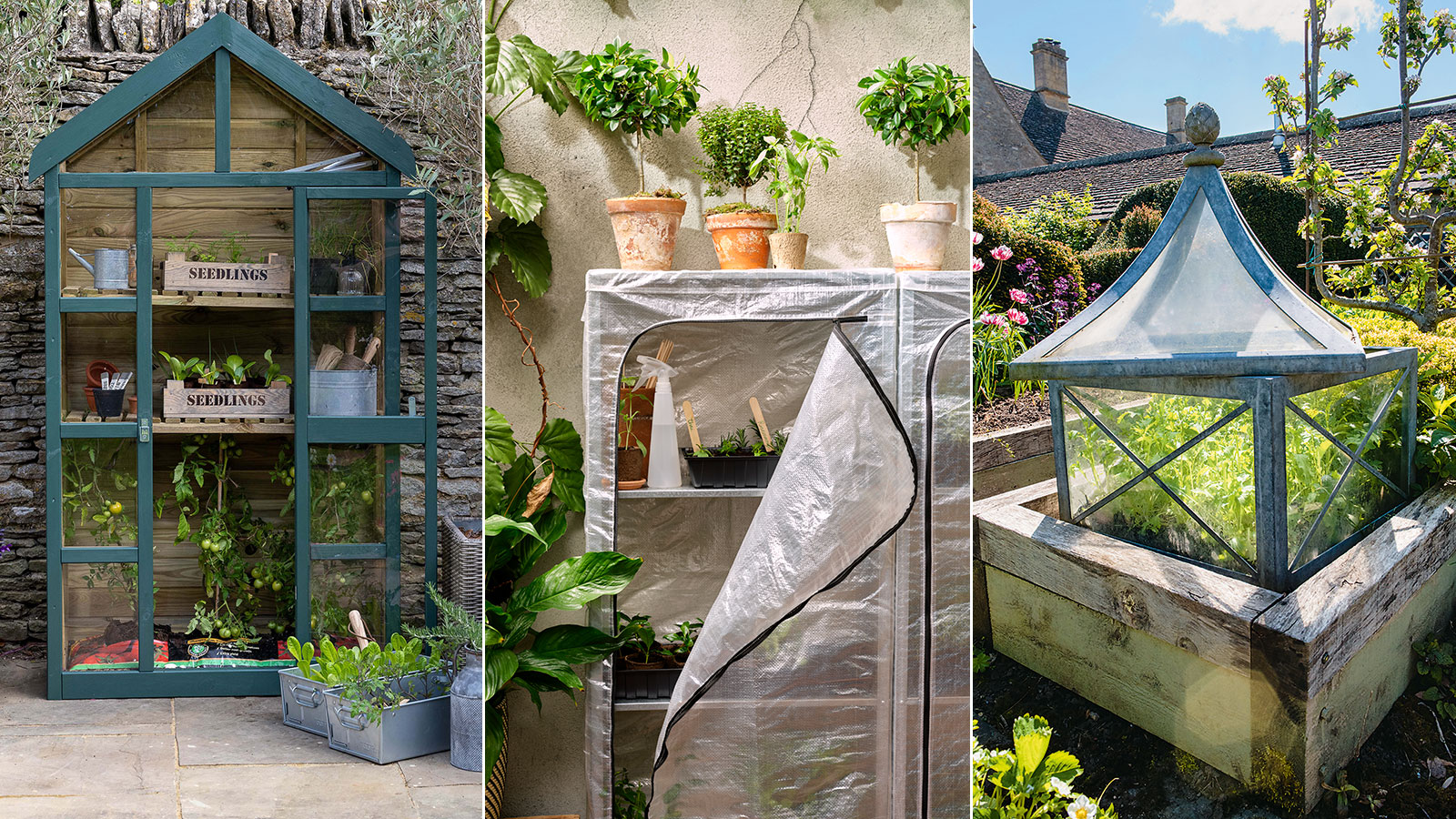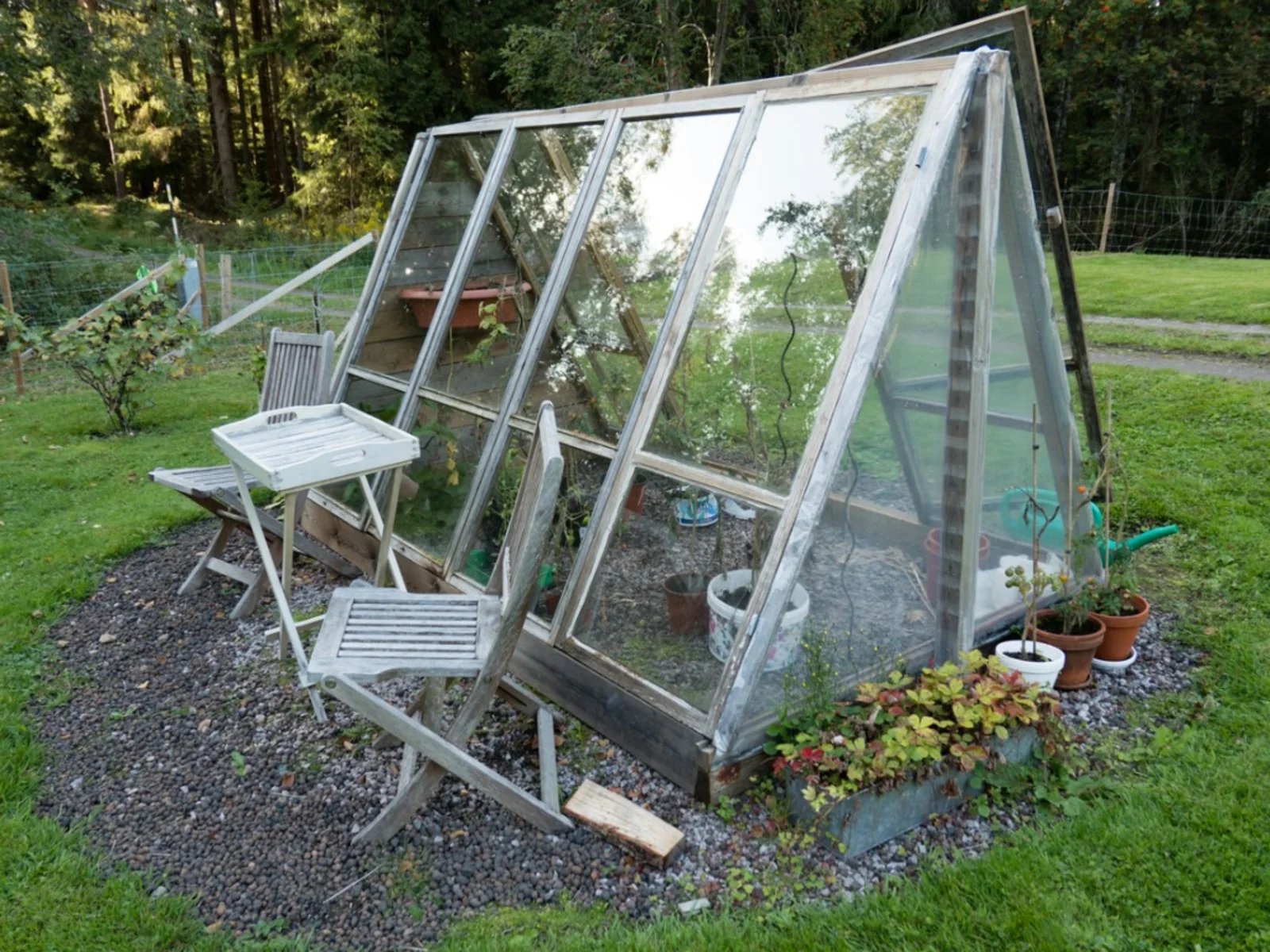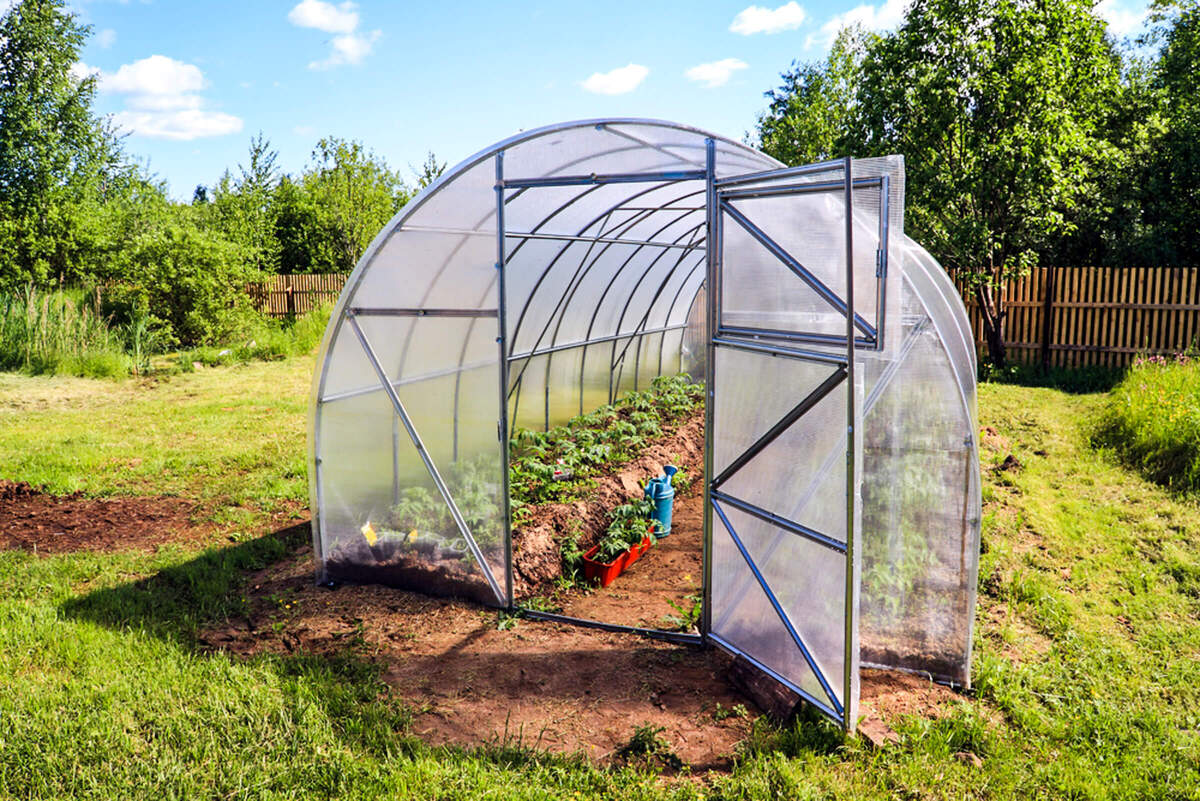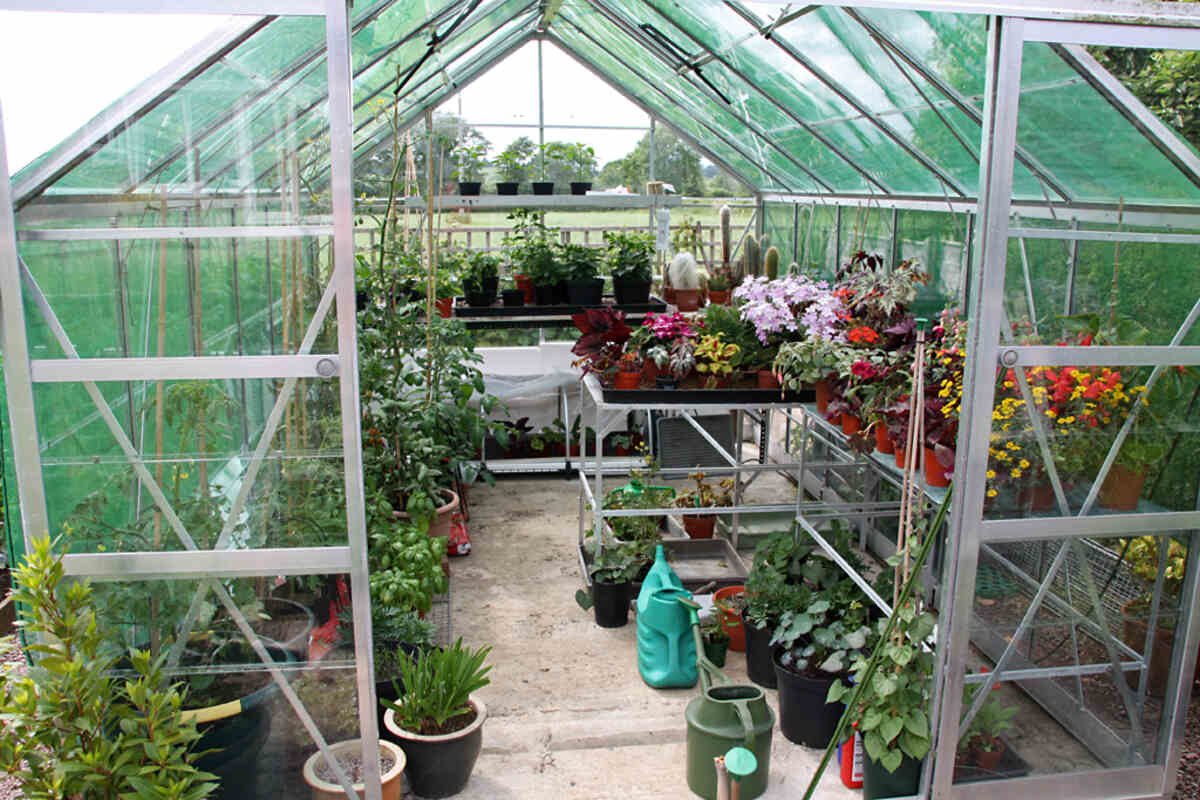Home>Gardening Techniques>DIY Projects>How To Build An Aquaponics Greenhouse


DIY Projects
How To Build An Aquaponics Greenhouse
Modified: January 22, 2024
Learn how to build your own aquaponics greenhouse with this comprehensive guide. Perfect for DIY projects and sustainable gardening enthusiasts.
(Many of the links in this article redirect to a specific reviewed product. Your purchase of these products through affiliate links helps to generate commission for Chicagolandgardening.com, at no extra cost. Learn more)
Table of Contents
- Introduction
- Benefits of an Aquaponics Greenhouse
- Choosing the Right Location
- Designing the Structure
- Selecting the Proper Aquaponics System
- Building the Foundation
- Constructing the Greenhouse Frame
- Installing the Covering
- Setting Up the Aquaponics System
- Adding Grow Beds and Planting
- Implementing the Fish Tanks
- Cycling the System
- Monitoring and Maintaining the Greenhouse
- Troubleshooting Common Issues
- Harvesting and Enjoying the Fruits of Your Labor
- Conclusion
Introduction
Welcome to the world of aquaponics, where the power of nature and smart technology meet to create an innovative and sustainable way to grow plants and raise fish. If you have a passion for DIY projects and a love for gardening, building your own aquaponics greenhouse might be the perfect project for you.
An aquaponics greenhouse combines aquaculture, the practice of raising fish, with hydroponics, the method of growing plants in water. The result is a mutually beneficial system where the waste produced by the fish is converted into nutrients for the plants, and the plants in turn filter the water for the fish. It’s a natural symbiosis that mimics the balance found in nature.
Building an aquaponics greenhouse has numerous benefits. First and foremost, it provides a year-round growing season, allowing you to cultivate fresh produce no matter the weather outside. Additionally, it conserves water as the system recirculates and reuses it, minimizing waste. By eliminating the need for soil, it also reduces the risk of pests and diseases, making your plants healthier and more resilient.
Not only is aquaponics an eco-friendly and sustainable way to grow food, but it is also incredibly rewarding. Imagine harvesting your homegrown vegetables and herbs, while at the same time enjoying the sight of colorful fish swimming in their tank. It’s a fascinating and educational experience that can be enjoyed by the whole family.
In this article, we will guide you through the process of building an aquaponics greenhouse, step by step. From choosing the right location to troubleshooting common issues, we will cover everything you need to know to get started. So roll up your sleeves and let’s dive into the world of aquaponics!
Benefits of an Aquaponics Greenhouse
Building an aquaponics greenhouse offers a multitude of benefits that make it an attractive option for gardening enthusiasts. Here are some of the key advantages:
1. Year-Round Growing: One of the biggest benefits of an aquaponics greenhouse is the ability to grow plants all year long, regardless of the external weather conditions. By controlling the temperature, humidity, and light inside the greenhouse, you can create the ideal environment for your plants to thrive.
2. Increased Crop Yield: Compared to traditional gardening methods, aquaponics can result in higher crop yields. The combination of nutrient-rich water and optimal growing conditions allows plants to grow faster and healthier, leading to larger harvests.
3. Water Conservation: Aquaponics systems use less water compared to conventional soil-based gardening. The water is continuously recirculated and reused, minimizing water wastage. As a result, aquaponics is an eco-friendly solution that conserves this valuable resource.
4. No Soil Needed: Unlike traditional gardening, aquaponics eliminates the need for soil. Instead, plants grow in a soilless medium such as gravel or clay pellets. This not only reduces the risk of pests, diseases, and weeds but also eliminates the need for intensive soil preparation and maintenance.
5. Nutrient-Rich Organic Produce: The fish waste in the aquaponics system serves as a natural fertilizer for the plants. As the waste is broken down by bacteria, it provides essential nutrients that are absorbed by the plants, resulting in organically-grown, nutrient-rich produce.
6. Reduced Chemical Usage: With aquaponics, there is minimal need for pesticides and herbicides. The closed-loop system naturally controls pests and diseases, reducing the reliance on harmful chemicals. This makes the plants healthier and the harvested produce safer for consumption.
7. Educational and Engaging: Building and maintaining an aquaponics greenhouse can be a fun and educational experience for individuals, families, and schools. It offers an opportunity to learn about sustainable agriculture, biology, and the delicate balance of ecosystems.
8. Flexibility and Scalability: Aquaponics systems can be designed to fit a variety of spaces, from small backyard setups to large commercial operations. Whether you have limited space or a large area to work with, aquaponics can be tailored to your available resources and desired scale.
9. Health Benefits: Consuming homegrown, organic produce has numerous health benefits. Aquaponics allows you to grow your own fruits, vegetables, and herbs, ensuring that you have access to fresh, nutritious, and chemical-free food.
Aquaponics combines the best of aquaculture and hydroponics, providing a sustainable and efficient way to grow plants and raise fish. With its year-round growing potential, water conservation, and numerous other benefits, an aquaponics greenhouse is a fantastic DIY project that will reward you with bountiful harvests and a deeper understanding of nature’s interconnectedness.
Choosing the Right Location
When it comes to building an aquaponics greenhouse, selecting the right location is crucial for the success of your project. Here are some factors to consider when choosing the optimal spot:
1. Sunlight: The greenhouse should be positioned in an area that receives ample sunlight throughout the day. Most plants require at least 6-8 hours of direct sunlight to thrive. Observe the area during different times of the day to ensure it receives adequate sunlight for plant growth.
2. Access to Water and Electricity: Your aquaponics system will require a consistent supply of water and electricity. Make sure the chosen location is near a water source and has access to electrical outlets. Consider the availability and convenience of access for easy maintenance and operation of the system.
3. Shelter from Strong Winds: Strong winds can damage the greenhouse structure and disrupt the optimal growing conditions inside. Look for a location that offers some natural windbreak, such as walls, trees, or fences. Alternatively, consider installing windbreaks around the greenhouse to provide protection.
4. Level Ground: It is important to build your aquaponics greenhouse on level ground to ensure stability and proper water drainage. Uneven terrain can cause water to pool in certain areas, leading to stagnant water or flooding. Use a leveler to ensure the ground is flat before proceeding with construction.
5. Accessibility: Consider the ease of access to the greenhouse for maintenance, harvesting, and general upkeep. It should be convenient for you to monitor and tend to the system on a regular basis. Assess the distance from your house and other amenities to ensure practicality and convenience.
6. Environmental Factors: Take into account the overall climate of the location. Extreme heat, cold, or high humidity can impact plant growth and the overall success of your aquaponics system. Consider installing shade cloths or ventilation systems to regulate temperature and humidity levels.
7. Noise and Odor: Evaluate the surroundings for potential noise or odor sources that may impact the greenhouse environment. Avoid areas near industrial facilities, busy roads, or other sources of pollution that could affect the water quality or the well-being of the fish and plants.
8. Future Expansion: If you have plans to expand your aquaponics greenhouse in the future, factor in the available space for potential growth. Consider the scalability of the location to accommodate additional grow beds, fish tanks, or even a larger greenhouse structure.
By carefully selecting the right location, you can create an ideal environment for your aquaponics greenhouse to thrive. Remember to consider the sunlight, access to water and electricity, wind protection, level ground, accessibility, climate, noise and odor factors, and future expansion possibilities. This thoughtful consideration will lay the foundation for a successful and productive aquaponics journey.
Designing the Structure
The design of your aquaponics greenhouse plays a crucial role in ensuring optimal growing conditions and the longevity of your system. Consider the following factors when designing the structure:
1. Size and Layout: Determine the size of your greenhouse based on the available space and your intended use. Consider the number of grow beds and fish tanks you plan to incorporate. Plan the layout of the greenhouse to optimize space efficiency and ensure easy access to all components.
2. Ventilation and Air Circulation: Proper ventilation is essential to regulate temperature, humidity, and air quality inside the greenhouse. Include windows, vents, or exhaust fans to promote airflow. This helps prevent the buildup of excess moisture, reduces the risk of pests and diseases, and promotes healthy plant growth.
3. Insulation: Depending on your climate, proper insulation can help maintain a stable environment inside the greenhouse. Insulated walls and roofing materials can help retain heat during colder months and prevent excessive heat during hot summers.
4. Lighting: Natural sunlight is ideal for plant growth, but additional supplemental lighting may be necessary, especially during winter months with shorter daylight hours. Consider installing grow lights to provide the necessary spectrum of light for optimal photosynthesis and plant development.
5. Water Management: Design your aquaponics system with efficient water management in mind. Incorporate gutters and downspouts to collect rainwater, which can be used to supplement the system. Ensure proper drainage to prevent waterlogging and potential damage to the greenhouse structure.
6. Materials: Select durable and weather-resistant materials to construct the greenhouse frame. Consider options such as metal, PVC, or wood, depending on your budget and desired aesthetic. The choice of materials will impact the longevity and overall stability of the structure.
7. Accessibility and Work Space: Allow enough room in the design for easy access and movement within the greenhouse. This includes pathways for maintenance, harvesting, and general tasks. Incorporate a designated work area for performing regular system maintenance and rearing fish.
8. Safety Measures: Implement safety features in your design such as non-slip flooring, secure fastenings, and protective coverings for any sharp edges or corners. Consider the safety of children or pets who may be present around the greenhouse.
9. Future Expansion: Plan for future expansion and upgrades as you design your aquaponics greenhouse. Leave room for additional grow beds, fish tanks, or even the possibility of connecting multiple greenhouses. This foresight will allow for scalability and flexibility as your interest in aquaponics grows.
By carefully considering the size, layout, ventilation, insulation, lighting, water management, materials, accessibility, safety measures, and future expansion possibilities, you can design a functional and efficient aquaponics greenhouse. A well-thought-out structure lays the foundation for a successful and productive aquaponics system.
Selecting the Proper Aquaponics System
Choosing the right aquaponics system for your greenhouse is a crucial step in ensuring the success of your project. Here are some factors to consider when selecting the proper system:
1. Media-based System: Media-based aquaponics systems utilize a grow bed filled with a soilless medium, such as gravel or expanded clay pellets. This type of system is more forgiving for beginners and provides a stable environment for plants. It also offers a greater variety of plant options.
2. Nutrient Film Technique (NFT) System: NFT systems involve a thin film of water flowing over shallow channels, allowing the plant roots to access the nutrients directly. This system is suitable for leafy greens and herbs and is known for its high water efficiency.
3. Deep Water Culture (DWC) System: DWC systems involve suspending the plant roots in nutrient-rich water. This type of system works well for fast-growing plants and is relatively easy to set up and maintain.
4. Hybrid Systems: Hybrid systems combine different aquaponics methods to maximize the benefits of each. For example, combining media-based grow beds with NFT or DWC systems can provide a wider range of plant options and increase overall system productivity.
5. Fish Selection: Choose fish species that are well-suited to aquaponics and can thrive in your climate conditions. Common choices include tilapia, trout, catfish, and perch. Consider factors such as temperature tolerance, growth rate, and compatibility with your local regulations and permits.
6. System Size: Determine the appropriate system size based on the available space in your greenhouse and the desired scale of your operation. Consider the number of fish tanks, grow beds, and the estimated plant and fish biomass you intend to have in your system.
7. Water Pump Capacity: Select a water pump that is appropriate for the size of your system. It should have the capacity to provide adequate water flow and circulation to all components, ensuring proper oxygenation and nutrient distribution.
8. Filtration System: Incorporate a filtration system to remove solids and maintain water quality. This can include mechanical filters, biological filters, and solids removal devices such as settling tanks or swirl filters. A well-designed filtration system helps prevent clogging and ensures a healthy environment for both fish and plants.
9. Automation and Monitoring: Consider the level of automation and monitoring you desire for your aquaponics system. This may include automated water level control, pH and temperature sensors, and timers for water pumping and lighting. Automated systems can help reduce maintenance tasks and provide better control over the system.
When selecting the proper aquaponics system for your greenhouse, weigh the pros and cons of different methods, consider the fish and plant types you wish to cultivate, and factor in the level of automation and monitoring you desire. By choosing the right system, you will create the ideal environment for your plants to thrive and your fish to flourish.
Building the Foundation
The foundation of your aquaponics greenhouse is an essential component that provides stability and support for the entire structure. Follow these steps to build a strong and reliable foundation:
1. Site Preparation: Clear the area where you intend to build the greenhouse foundation. Remove any vegetation, rocks, or debris that may interfere with the construction process.
2. Leveling the Ground: Use a leveler to ensure the ground is level and smooth. This will prevent any potential issues with water drainage and structural stability. Adjust the ground as needed, filling in low spots and removing any high areas.
3. Marking the Foundation: Mark the outline of the greenhouse on the ground to visualize the space it will occupy. This will help ensure accuracy and precision during the construction process.
4. Digging Footings or Trenches: Dig footings or trenches along the marked outline. The depth and size of the footings will depend on the size and weight of your greenhouse structure. Refer to the manufacturer’s guidelines or consult with a professional if needed.
5. Adding Reinforcement: Depending on the size of your greenhouse, consider adding reinforcement to the footings. This may include rebar or mesh to increase the structural integrity and load-bearing capacity of the foundation.
6. Pouring Concrete: Mix and pour concrete into the footings or trenches. Use a concrete mixer or hire a professional if necessary. Ensure that the concrete is distributed evenly and fills the space completely. Smooth the surface with a trowel for a clean finish.
7. Curing the Concrete: Allow the concrete to cure according to the manufacturer’s instructions. This typically involves keeping the concrete moist and protected from extreme temperatures during the curing period. Follow the recommended curing time before moving forward with the construction process.
8. Securing Anchor Bolts: If your greenhouse requires anchor bolts to connect the structure to the foundation, place and secure them in the wet concrete while it is still workable. Ensure they are positioned correctly and level with the surface of the concrete.
9. Allowing for Proper Drainage: Ensure that the foundation is designed to allow proper water drainage. Incorporate slopes or grooves in the concrete to direct water away from the greenhouse structure. This will help prevent water buildup or potential damage to the foundation over time.
10. Inspecting and Reinforcing: Once the foundation is fully cured, inspect it for any cracks or imperfections. If necessary, reinforce any weak areas using concrete patching material or reinforcement rods. This will ensure the longevity and stability of your greenhouse foundation.
Building a solid foundation is a critical step in constructing your aquaponics greenhouse. By following these steps and taking the time to properly prepare and construct the foundation, you can create a strong and stable base that will support your greenhouse structure for years to come.
Constructing the Greenhouse Frame
Once you have built a sturdy foundation for your aquaponics greenhouse, you can move on to constructing the frame. Here are the steps to follow when building the greenhouse frame:
1. Gather Materials and Tools: Collect all the necessary materials and tools for the construction of the frame. This may include metal or PVC pipes, connectors, screws, bolts, and a drill or wrench.
2. Design the Frame: Design the frame based on the dimensions and layout of your greenhouse. Take into account the height, width, and length, as well as any specific features such as doors, windows, or additional levels.
3. Cut and Prepare the Frame Components: Measure and cut the metal or PVC pipes to the required lengths according to your design. Ensure that each component is properly labeled for easy assembly.
4. Assemble the Main Framework: Start by connecting the main supports of the frame. This typically involves joining the vertical posts with horizontal beams to create a rectangular or square structure. Use connectors or screws to secure the joints.
5. Install Additional Framework Elements: Depending on your design, add any additional framework elements such as cross braces for added stability or supports for doors and windows. Secure these elements to the main framework using appropriate connectors or screws.
6. Attach the Greenhouse Covering: Once the frame is complete, you can attach the greenhouse covering. This can be a polyethylene film, polycarbonate panels, or any other suitable material that provides insulation and protection for your plants. Follow the manufacturer’s instructions for proper installation.
7. Install Doors and Windows: Install any doors and windows according to your design. Ensure they fit securely and provide proper sealing to prevent drafts and maintain the desired temperature and humidity inside the greenhouse.
8. Secure the Frame to the Foundation: Once the greenhouse frame is fully assembled, secure it to the foundation using anchor bolts or screws. This will ensure that the structure remains stable, even during strong winds or other external forces.
9. Double-Check and Adjust: Once the frame is complete and secured, double-check all connections and joints to ensure they are properly tightened. Make any necessary adjustments or reinforcements to ensure the overall stability of the structure.
10. Test the Frame: Give the frame a gentle shake and inspect for any signs of wobbling or instability. If any issues are detected, reinforce the weak areas or make necessary adjustments to ensure a solid and secure greenhouse frame.
Constructing the greenhouse frame is a crucial step in building your aquaponics greenhouse. By following these steps and taking the time to carefully assemble and secure the frame, you will create a stable and reliable structure to support the growth of your plants and the success of your aquaponics system.
Installing the Covering
Installing the covering for your aquaponics greenhouse is an important step in creating the optimal growing environment for your plants. Here’s a guide on how to properly install the greenhouse covering:
1. Choose the Right Covering Material: Select a covering material that suits your specific needs. Common options include polyethylene film, polycarbonate panels, or greenhouse-grade glass. Consider factors such as durability, insulation properties, light transmission, and cost.
2. Prepare the Frame: Ensure that the greenhouse frame is clean, free of any debris, and securely anchored to the foundation. Check for any sharp edges or rough surfaces that could damage the covering material.
3. Unroll the Covering: Begin by unrolling the greenhouse covering material, making sure it is the correct size and properly oriented to cover the entire frame. Work with a partner if needed, as large coverings can be difficult to handle on your own.
4. Secure the Covering to One Side: Starting at one end or side of the greenhouse, carefully attach the covering material to the frame. Use clips, clips with wiggle wire, or other suitable fasteners recommended for the specific covering material. Ensure the material is pulled tight to minimize wrinkles or sagging.
5. Stretch and Align the Covering: As you secure the material along one side, gently stretch and align it across the frame. This will help achieve a taut and even covering surface. Make adjustments as needed to ensure a proper fit.
6. Secure the Covering on Other Sides: Once one side is secured and aligned, continue attaching the material along the remaining sides of the greenhouse frame. Work methodically and evenly to ensure consistent tension and a seamless installation.
7. Trim Excess Material: Once the covering is secure on all sides, trim any excess material using sharp scissors or a utility knife. Take care to leave a sufficient overlap on the edges to ensure proper sealing and prevent exposure to external elements.
8. Seal Joints and Edges: Use specialty greenhouse tape or sealing compound to seal any gaps or joints where the covering overlaps. Ensure a tight seal to prevent the ingress of pests, drafts, or excess moisture.
9. Install Doors and Vents: If your greenhouse design includes doors and vents, install them according to the manufacturer’s instructions. Ensure they fit properly and provide adequate ventilation while maintaining the integrity of the greenhouse covering.
10. Inspect and Adjust: Once the covering is installed, inspect the entire greenhouse for any loose or insecure areas. Check for proper tension, alignment, and sealing. Make any necessary adjustments or reinforcements to ensure a snug and secure fit.
Properly installing the covering for your aquaponics greenhouse is essential for maintaining an optimal growing environment for your plants. By following these steps and ensuring a tight, well-sealed covering, you’ll create a stable and protected space where your aquaponics system can thrive.
Setting Up the Aquaponics System
Setting up the aquaponics system is a critical step in the construction of your greenhouse. Here are the essential components and steps to follow when setting up your aquaponics system:
1. Fish Tanks: Install the fish tanks in a designated area within the greenhouse. Choose tanks that are appropriate for the type and number of fish you plan to raise. Ensure the tanks are properly supported, level, and have a secure lid to prevent fish from escaping.
2. Water Pump and Plumbing: Install a water pump that can handle the flow rate required for your system. Connect the pump to the fish tanks and the grow beds using a series of pipes and fittings. Ensure that proper flow and drainage are established between the various components.
3. Grow Beds: Set up the grow beds on a leveled surface, such as a bench or rack system. Fill the beds with a soilless grow media, such as gravel or clay pellets, and level it to provide a suitable planting environment for the plants.
4. Plumb the Grow Beds: Connect the grow beds to the plumbing system in a way that allows water to flow from the fish tanks through the grow beds and back to the fish tanks. This provides a continuous cycle of water and nutrients for both the fish and the plants.
5. Solids Removal: Integrate a solids removal method, such as a settling tank or swirl filter, to remove solid waste and excess fish feed from the system. This helps prevent clogs and maintain water quality.
6. Test Water Quality: Test the water in your aquaponics system to ensure optimal conditions for the fish and plants. Monitor factors such as pH, ammonia, nitrite, nitrate levels, and water temperature. Adjust these parameters as needed to create a suitable environment for both plants and fish.
7. Introduce Fish and Cycling: Introduce the selected fish species into the fish tanks and allow the system to cycle. Cycling is the process of establishing beneficial bacteria that convert fish waste into nutrients for the plants, ensuring a balanced ecosystem. Monitor water parameters closely during this period and make any necessary adjustments.
8. Add Plants: Once the system has cycled and the water parameters are stable, add your chosen plants to the grow beds. Transplant seedlings or germinated seeds into the grow media and ensure they are properly spaced to allow for healthy growth.
9. Monitor and Maintain: Regularly monitor the water quality, temperature, and overall health of the aquaponics system. Ensure that the water levels remain stable, the plants receive adequate light, and the fish are healthy. Make any necessary adjustments and perform routine maintenance to maintain the system’s equilibrium.
10. Feed and Harvest: Feed the fish according to their dietary requirements, ensuring a well-balanced diet. Monitor the growth of the fish and plants, and harvest the mature plants as needed. Enjoy the fruits of your labor by incorporating the homegrown produce into your meals.
Setting up the aquaponics system is an exciting milestone in your greenhouse project. By following these steps and closely monitoring the system, you’ll create a balanced and productive environment that supports the growth of both fish and plants in perfect harmony.
Adding Grow Beds and Planting
Adding grow beds and planting is a crucial step in the success of your aquaponics system. Here’s a guide on how to add grow beds and start planting:
1. Prepare the Grow Beds: Ensure that the grow beds are properly installed and filled with a suitable grow media such as gravel or clay pellets. Level the media to create a consistent planting surface.
2. Choose Your Plants: Select plants that are well-suited for aquaponics and align with your personal preferences and needs. Leafy greens, herbs, and some fruiting plants like tomatoes and peppers thrive in aquaponic systems.
3. Start with Seedlings or Seeds: Begin planting with either seedlings or seeds, depending on your personal preference and growing timeline. Seedlings provide a head start, while seeds offer the opportunity to grow plants from scratch.
4. Plant Spacing: Ensure proper spacing between plants to allow for healthy growth and airflow. Follow the spacing guidelines specific to the plant species you are cultivating.
5. Watering the Grow Beds: Initially, manually water your plants until the aquaponics system has cycled and the water pump is running smoothly. After that, rely on the continuous flow of nutrient-rich water from the fish tanks to water the plants.
6. Monitor Nutrient Levels: Regularly monitor the nutrient levels in the water and the overall health of your plants. Adjust the nutrient levels as needed to ensure optimal growth and productivity.
7. Pruning and Maintenance: Trim and prune your plants as necessary to promote healthy growth and prevent overcrowding. Regularly remove any dead leaves or plant debris that may accumulate in the grow beds.
8. Monitor the pH Level: Maintain an appropriate pH level for your plants, typically within the range of 6.0 to 7.0. Monitor the pH regularly and make adjustments using pH-up or pH-down solutions if necessary.
9. Address Pest and Disease Control: Keep an eye out for pests and diseases that may affect your plants. Use organic pest control methods whenever possible to ensure a healthy and chemical-free environment for both plants and fish.
10. Harvest and Enjoy: As your plants grow, harvest them as needed to enjoy fresh, homegrown produce. Continuously rotate new plants into the system so that you can have a continuous harvest.
Adding grow beds and planting is an exciting step in the aquaponics journey. By following these guidelines, monitoring the nutrient levels, maintaining proper plant spacing, and keeping a close eye on the overall health of your plants, you’ll create a thriving and productive aquaponics system in your greenhouse.
Implementing the Fish Tanks
Implementing the fish tanks is a vital step in your aquaponics system setup. Here’s a guide on how to properly implement the fish tanks:
1. Choose Suitable Fish Tanks: Select fish tanks that are suitable for the fish species you plan to raise and fit the size and scale of your aquaponics system. Consider factors such as tank size, material, and the number of tanks needed.
2. Proper Placement: Determine the ideal location for the fish tanks within your greenhouse. Ensure that there is enough space for the tanks and easy access for maintenance. Consider factors like natural sunlight, temperature stability, and appropriate plumbing connections.
3. Install the Tanks: Set up the fish tanks in the designated location. Ensure that the tanks are level and properly supported, ensuring stability and preventing any potential leaks. Follow the manufacturer’s instructions for assembling and installing the tanks.
4. Connect Plumbing: Connect the plumbing system, including pipes and fittings, to ensure proper water flow between the fish tanks and the rest of the aquaponics system. Use appropriate materials and connectors to ensure a secure and leak-free connection.
5. Introduce Fish Gradually: Gradually introduce the fish to the tanks, acclimating them to the water conditions in the greenhouse. Do not overcrowd the tanks, as it can lead to poor water quality and stress on the fish. Monitor their behavior and health during the acclimation process.
6. Monitor Water Parameters: Regularly monitor and maintain water parameters such as temperature, pH, ammonia, nitrite, and nitrate levels in the fish tanks. Ensure that the water conditions remain optimal for the health and well-being of the fish.
7. Provide Adequate Oxygenation: Ensure that there is proper oxygenation in the fish tanks to support fish respiration. Use aeration systems or bubble stones to maintain oxygen levels in the water. Adequate oxygenation is essential for the health and survival of the fish.
8. Feed the Fish: Feed the fish with appropriate and nutritionally balanced fish feed. Follow recommended feeding guidelines for the specific fish species you are raising. Avoid overfeeding, as it can lead to poor water quality and fish health issues.
9. Perform Regular Tank Maintenance: Regularly clean and maintain the fish tanks to ensure a clean and healthy environment for the fish. Monitor for any signs of diseases or stress and take appropriate actions if necessary.
10. Monitor Fish and Plant Interaction: Observe the interaction between the fish and plants in your aquaponics system. Ensure that there is a symbiotic relationship where the fish provide nutrients for the plants, and the plants help filter and improve water quality for the fish.
By properly implementing the fish tanks, closely monitoring water parameters, providing adequate oxygenation, and performing regular maintenance, you will create a healthy and flourishing aquaponics system. Enjoy the fascinating interaction between the fish and plants as they thrive and contribute to a sustainable and productive greenhouse ecosystem.
Cycling the System
Cycling the aquaponics system is a crucial step in establishing a balanced and thriving ecosystem. It involves establishing beneficial bacteria that convert fish waste into nutrients for the plants. Follow these steps to cycle your aquaponics system:
1. Start with Fishless Cycling: Before introducing fish, it is recommended to start with fishless cycling. This involves adding a source of ammonia to the system to simulate fish waste. This can be done by adding ammonia solution or rotting fish food to the water.
2. Test Water Parameters: Regularly test the water parameters, including ammonia, nitrite, and nitrate levels. You want to see chemical changes that indicate the presence of beneficial bacteria converting ammonia to nitrite, and eventually to nitrate.
3. Monitor Ammonia Levels: Initially, ammonia levels will rise as the bacteria population grows. Monitor the ammonia levels and ensure they gradually decrease over time. High ammonia levels can be harmful to fish and plants.
4. Observe Nitrite Levels: As the beneficial bacteria establish, they will convert ammonia into nitrite. Monitor nitrite levels and ensure they also decrease over time. High nitrite levels can be toxic to fish and can slow down the cycling process.
5. Monitor Nitrate Levels: As the cycle progresses, nitrite levels should decrease and nitrate levels should gradually rise. Nitrate is a beneficial nutrient for plants, and its presence indicates a well-established cycling process.
6. Adjust Water Parameters: Throughout the cycling process, monitor and adjust water parameters as needed. This includes maintaining adequate pH levels and temperature, ensuring suitable ammonia levels are present, and promoting a healthy environment for the bacteria to thrive.
7. Test for Stability: Once the ammonia and nitrite levels have reached zero and nitrate is being produced, test the system’s stability by adding a small quantity of ammonia and ensuring it is converted to nitrate within 24-48 hours. This indicates that the cycling process is successfully established.
8. Introduce Fish: Once the cycling process is complete and stable, you can introduce your chosen fish species to the aquaponics system. Start with a small number of fish and allow them to acclimate to the system gradually.
9. Observe and Monitor: Continuously observe and monitor the fish and plant health, as well as the water parameters, especially during the first few weeks after introducing the fish. Make any necessary adjustments to maintain a healthy ecosystem.
10. Regular Maintenance: Perform routine maintenance on the aquaponics system, including water testing, cleaning filters, and maintaining proper oxygenation. This will help ensure the continued success and stability of your aquaponics system.
Cycling the aquaponics system is a critical step in establishing a balanced and efficient ecosystem. By following these steps and closely monitoring the water parameters, you will create a healthy environment for both fish and plants, setting the stage for a thriving and productive aquaponics system in your greenhouse.
Monitoring and Maintaining the Greenhouse
Maintaining a well-monitored and properly maintained greenhouse is essential for the long-term success of your aquaponics system. Here are some key aspects to consider when monitoring and maintaining your greenhouse:
1. Water Quality: Regularly monitor the water quality parameters, including pH, ammonia, nitrite, nitrate levels, and temperature. Keep the water within the optimal range for the health and well-being of both the fish and the plants.
2. Nutrient Levels: Continuously monitor and adjust nutrient levels in the system. Maintain a balance that ensures plants receive adequate nutrients while preventing nutrient imbalances that can harm both plants and fish.
3. Oxygenation: Monitor the oxygen levels within the water to ensure sufficient oxygenation for the fish and the plants. Supplemental aeration may be necessary if oxygen levels are low.
4. Temperature Control: Regularly monitor the temperature inside the greenhouse to maintain an optimal environment for both the fish and the plants. Adjust the temperature as needed, especially during extreme weather conditions.
5. Pest and Disease Control: Regularly inspect the greenhouse for pest infestations and signs of plant diseases. Implement appropriate pest control methods, such as biological controls, organic insecticides, or integrated pest management techniques.
6. Weed Management: Keep the grow beds free from weeds that can compete with the plants for nutrients and resources. Regularly inspect and remove any weeds that may appear in the media or around the greenhouse.
7. Regular Cleaning: Perform routine cleaning to remove any debris, dead plant materials, or excess fish waste from the system. Regularly clean filters, remove sludge, and maintain proper functioning of pumps and plumbing to prevent clogs and disruptions in the system.
8. Monitoring Plant Health: Continuously monitor the health of your plants, checking for nutrient deficiencies, signs of pest damage, or any abnormalities. Take immediate action to address any plant health issues to prevent them from spreading and impacting the overall system.
9. Fish Health Observation: Regularly observe the behavior and health of the fish. Look for signs of stress, disease, or abnormal behavior. Take appropriate measures if any issues are discovered, such as adjusting water parameters, improving oxygenation, or providing appropriate medications if necessary.
10. System Records: Maintain records of water parameters, nutrient levels, plant growth, and fish health. This will help you track the progress and identify any changes or trends that may require attention. Having a record will also facilitate troubleshooting and problem-solving in the future.
Monitoring and maintaining your greenhouse ensures a healthy and productive aquaponics system. By regularly monitoring water quality, nutrient levels, temperature, and plant and fish health, and performing necessary maintenance tasks, you can create an optimal environment for your plants and fish to thrive.
Troubleshooting Common Issues
While aquaponics systems are generally efficient and self-sustaining, issues can still arise. Here are some common problems you may encounter with your aquaponics system and troubleshooting tips to resolve them:
1. Poor Water Quality: If water quality deteriorates, check the pH level, ammonia, nitrite, and nitrate levels. Adjust as necessary to maintain proper parameters and ensure a healthy environment for your fish and plants.
2. Nutrient Imbalance: Nutrient imbalances can occur if the system is not properly balanced or if there is excess or insufficient nutrient availability. Test the water and adjust nutrient levels accordingly to promote healthy plant growth.
3. Pest Infestations: Insects and pests can damage your plants. Implement organic pest control methods such as introducing beneficial insects, manually removing pests, or using organic insecticides to resolve the problem.
4. Disease Outbreaks: Plant diseases can spread in a greenhouse environment. Isolate infected plants and treat them with appropriate organic disease control methods. Maintain proper air circulation and avoid overwatering, as excessive moisture can contribute to disease development.
5. Low Oxygen Levels: Insufficient oxygen can be detrimental to both fish and plants. Increase aeration and ensure proper water circulation to improve oxygenation. Consider adding supplemental aeration devices if necessary.
6. Algae Growth: Excessive algae growth can occur if there is an imbalance in nutrient levels or excessive sunlight exposure. Reduce nutrient levels, provide shading, and implement algae control measures such as using light-blocking covers or adding algae-eating organisms.
7. Clogged Plumbing or Filters: Clogging in pipes or filters can disrupt water flow and affect the functioning of the system. Regularly clean and maintain plumbing and filters to prevent clogs and ensure continuous water circulation.
8. Temperature Fluctuations: Extreme temperature fluctuations can cause stress to fish and plants. Install insulation to regulate temperature, use shade cloths to block excessive sunlight, and adjust temperature control mechanisms to provide a stable and favorable environment.
9. Slow Plant Growth: If plants are not growing as expected, check nutrient levels, lighting conditions, and consider other factors that may affect growth. Make adjustments to optimize growing conditions, such as providing supplemental lighting or adjusting nutrient dosages.
10. Fish Health Problems: Watch for signs of stress or disease in the fish, such as sluggish behavior, loss of appetite, or abnormal physical appearance. Address any potential issues promptly, including adjusting water parameters, ensuring proper oxygenation, and providing suitable treatment, if necessary.
When troubleshooting aquaponics system issues, be observant, regularly monitor water parameters and nutrient levels, and promptly address any abnormalities. With proper maintenance and quick action, you can overcome common issues and maintain a healthy and thriving aquaponics system.
Harvesting and Enjoying the Fruits of Your Labor
One of the most rewarding aspects of aquaponics is reaping the fruits of your labor by harvesting and enjoying homegrown produce. Here’s a guide to help you make the most of your aquaponics system’s bountiful harvest:
1. Timing the Harvest: Monitor your plants closely and harvest them at the right time. Different crops have varying maturity periods, so be patient and allow each plant to reach its optimal stage of growth before harvesting.
2. Harvest Methods: Use appropriate tools and techniques to harvest your plants without damaging them. Use sharp scissors or a knife to cut leafy greens and herbs near the base of the plant. For fruiting crops, gently twist or cut the fruits from the plant.
3. Harvesting Leafy Greens and Herbs: Cut leafy greens, such as lettuce, spinach, and kale, just above the base of the leaves. Avoid harvesting more than one-third of the plant at once to allow for regrowth and continuous harvesting.
4. Harvesting Fruiting Crops: For fruits like tomatoes, peppers, or cucumbers, pick them when they have reached their desired size and color. Use a clean knife or shears to cut the stem close to the fruit, taking care not to damage nearby branches or vines.
5. Regular Harvesting: Regularly harvest ripe produce to encourage continuous growth and better health of your plants. The more you harvest, the more your plants will produce.
6. Handling and Storing: Handle harvested produce gently to minimize damage. Clean and rinse them thoroughly before storing, and remove any damaged or spoiled parts. Different crops have specific storage requirements, so follow specific guidelines for each type of produce.
7. Enjoying the Freshness: The greatest benefit of aquaponics is the freshness and flavor of your homegrown produce. Incorporate the harvest into your meals right away to enjoy the full nutritional value and deliciousness of your crops.
8. Sharing your Harvest: If you have an abundant harvest and can’t consume it all, consider sharing your produce with family, friends, or local community members. It’s a great way to spread the goodness of homegrown food and connect with others.
9. Experimenting with Recipes: Get creative in the kitchen and experiment with different recipes using your fresh aquaponics produce. Explore new flavors and techniques to make the most of your harvest, whether it’s a refreshing salad, a hearty stir-fry, or a flavorful soup.
10. Reflecting and Planning: Take a moment to reflect on your aquaponics journey and the success of your harvest. Assess what worked well and what could be improved for the next growing season. Start planning for new crops, new techniques, or even expanding your aquaponics system.
Harvesting the fruits of your labor in aquaponics is an immensely satisfying experience. Enjoy the freshness and flavors of your homegrown produce, share with others, and let your success inspire you to further explore the possibilities of aquaponics in your greenhouse.
Conclusion
Building and maintaining an aquaponics greenhouse is an exciting and rewarding venture that combines the art of gardening with the science of aquaculture. By harnessing the power of nature and modern technology, you can create a self-sustaining ecosystem that produces fresh, organic food year-round.
Throughout this guide, we have explored the various steps involved in constructing an aquaponics greenhouse, from choosing the right location and designing the structure to implementing the aquaponics system and troubleshooting common issues. Each step is essential in creating a successful and productive environment for both plants and fish.
With an aquaponics greenhouse, you can enjoy a multitude of benefits, including a constant supply of fresh, nutrient-rich produce, water conservation, reduced chemical usage, and a deeper understanding of sustainable agriculture. It’s an environmentally friendly and fulfilling way to connect with nature and promote self-sufficiency.
However, it’s important to remember that building an aquaponics greenhouse requires ongoing monitoring and maintenance to ensure the health and productivity of your system. Regularly test water parameters, adjust nutrient levels, observe plant and fish health, and perform routine upkeep to address any issues that may arise.
As you harvest and enjoy the fruits of your labor, take pride in the knowledge that you are contributing to a more sustainable and resilient food system. Embrace the opportunity to experiment with recipes, share your bounty, and continue to learn and refine your aquaponics skills.
So, roll up your sleeves and embark on your aquaponics greenhouse journey. Immerse yourself in the fascinating world of aquaponics and let your creativity and passion for DIY projects thrive. With dedication and care, your aquaponics greenhouse will provide a constant source of fresh food and a fulfilling connection to nature’s intricate cycles.
